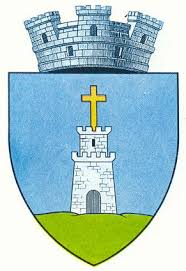 Şimleu Silvaniei
Şimleu Silvaniei
Şimleu Silvaniei is a town in Sălaj County, Transylvania, Romania with a population of 16,066 people (2002 census).
Three villages are administered by the town: Bic (Bükk), Cehei (Somlyócsehi) and Pusta (Csehipuszta).
In 1258 it was mentioned as Wathasomlyowa. The name means "Wata's mountain"; the name Wata is of Old Turkish origin, while somlyowa is an archaic Hungarian word for mountain(side).
The town belonged to the Báthory family, whose ancestral castle stood here. The castle was built by Miklós, Voivod of Transylvania in the early 13th century and was first mentioned in 1319. After the Báthory family built a mansion in the town in 1592, the castle became deserted and today lies in ruins.
The mansion was occupied by Giorgio Basta from Zsigmond Báthory in 1600. In 1703 it was occupied by Kurucs.
In 1919, the first Romanian-language high school in Sălaj County was founded here, and today the town is home to three high schools.
In 1940, Şimleu Silvaniei, along with the rest of Northern Transylvania, was given back to Hungary through the Second Vienna Award imposed by the Nazi Germany and Fascist Italy. During World War II, Nazis assembled the area's Jews, numbering about 8,500, into the Cehei Ghetto about three miles from the city. The Jews of Sălaj County were concentrated in the Klein Brickyard of Cehei, in a marshy and muddy area. Since the brick-drying sheds were rather limited, many of the ghetto inhabitants were compelled to live under the open sky. The ghetto was guarded by a special unit of gendarmes from Budapest and operated under the command of Krasznai, one of the most cruel ghetto commanders in Hungary. Most of the deportees were transported to Auschwitz-Birkenau for forced labor, cruel experiments and/or execution.
Sights:
- Castle ruins
- Báthory mansion (16th century)
- Roman Catholic church (1532)
- Northern Transylvania Holocaust Memorial Museum